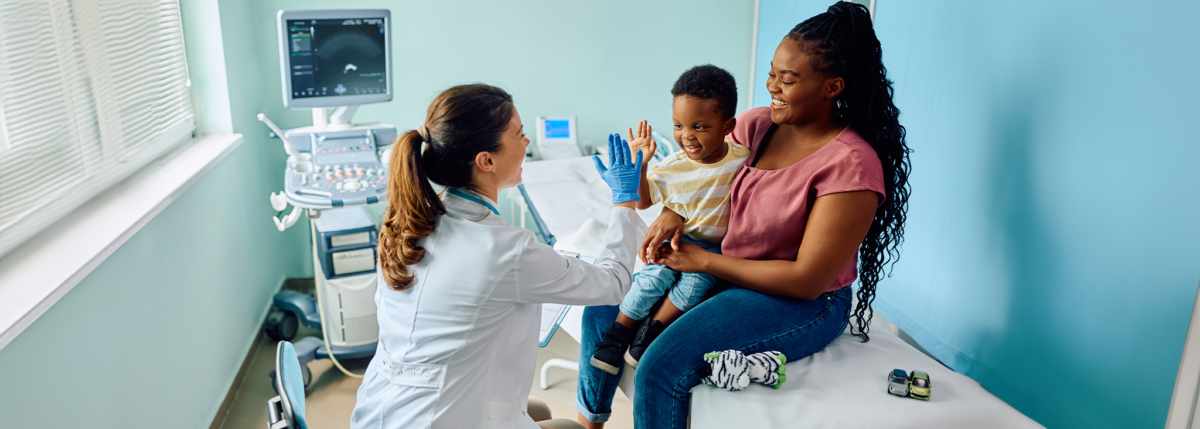Screening Children for Type 1 Diabetes Autoantibodies
Screening and testing children for type 1 diabetes autoantibodies is relatively new.
Type 1 diabetes is developed on a continuum at different stages, and marked by:
- The presence of beta-cell autoimmunity, and
- The detection of two or more islet autoantibodies (i.e. proteins developed by the immune system).
At present, there is no blanket recommendation for all children to be screened for type 1 diabetes. There are tools, however, that screen and monitor children for type 1 diabetes months—and maybe even years—before they actually have the condition.
What is the Importance of Screening and Testing Children for Type 1 Diabetes Autoantibodies?
Beyond Type 1 sat down with Courtney Cusp, who recently had her children tested for islet autoantibodies.
Courtney—a research scientist and mom of three living outside of Washington, DC—knew she wanted to get her children tested for diabetes autoantibodies as soon as she could.
Courtney and her sister live with type 1 diabetes. So, Courtney knew that she had a family history of the disease.
While Courtney was knowledgeable about the early signs/symptoms of type 1 diabetes, she wanted to know if her children were at an elevated risk of developing the condition themselves.
She knew that getting an autoantibody screening was the answer for her and her family.
When a Child is Screened for Type 1 Diabetes, What Types of Autoantibodies Are Tested?
The presence of two or more of the following islet autoantibodies is associated with the development of type 1 diabetes:
- Islet Cell Cytoplasmic Autoantibodies
- Glutamic Acid Decarboxylase Autoantibodies
- Insulinoma-Associated-2 Autoantibodies
- Insulin Autoantibodies
- Zinc Transporter-8 Autoantibodies
Although extremely rare, some people have no antibodies at diagnosis.
The beauty of autoantibody screening is that markers for type 1 diabetes can be detected months—or even years—before the condition develops.
In Courtney’s case, she knew the type-1-diabetes risk for her children was higher than normal for a diabetes diagnosis—considering that she, her sister and her nephew all live with type 1 diabetes.
One of Courtney’s children, Connor, was enrolled in the TEDDY study at birth, and her other two were screened for type 1 when they were both toddlers.
Connor—who is now 18—tested negative for autoantibodies at birth, and has still not developed any autoantibodies for diabetes.
Courtney’s other two children also have not been diagnosed with type 1 diabetes.
Due to her sister’s type 1 diabetes diagnosis, Courtney had enrolled years earlier in TrialNET when she was in graduate school.
“I had autoantibodies GAD, IAA, and ICA, and went through screening with IV glucose and oral glucose, and was eventually diagnosed with type 1 diabetes several years after enrolling in the screening.”
Knowledge is Power—’Screening is Time Well Spent’
For her children, Courtney has been on a “watch-and-wait” approach.
Thankfully, they are still free of type 1 diabetes.
If any of her children start to develop type-1 symptoms, however, Courtney will be prepared.
As for her own diagnosis, she relied on support from her community.
“I had an endocrinologist on my PhD committee, and he saw me in the clinic and prepared me for everything going forward,” says Courtney. “He even helped me find a new doctor when I moved from Florida to Maryland.”
She says she had great experiences screening for autoantibodies. She adds that knowing that a type 1 diabetes diagnosis may be on the horizon helped prepare her—and her children—for life with a chronic disease.
Courtney recommends that anyone with a family history of type 1 diabetes get their children screened.
She stresses that there is no downside.
“If we can prevent even one diabetes diagnosis from occurring in diabetic ketoacidosis, screening is time well spent.”
This content was made possible by Sanofi-Aventis, an active partner of Beyond Type 1. Beyond Type 1 maintains editorial control over its content.




